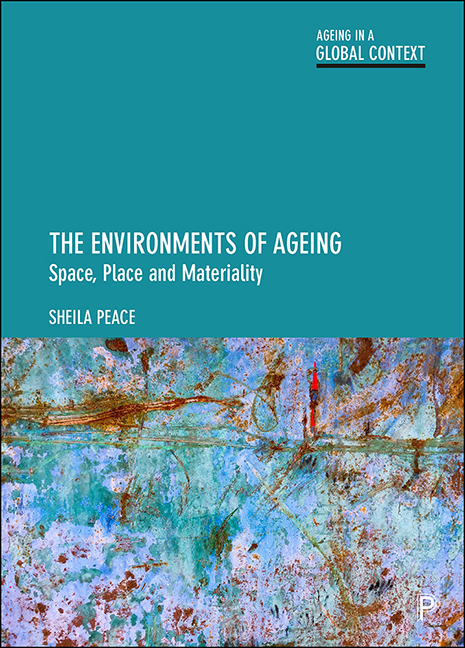Book contents
- Frontmatter
- Dedication
- Contents
- List of figures and tables
- Research summaries
- List of acronyms
- About the author
- Acknowledgements
- Series editors’ preface
- Preface: understanding the structure
- 1 Person and environment
- 2 Theoretical development
- 3 The global context
- 4 Environmental living
- 5 Housing in later life
- 6 Housing histories, housing options
- 7 Alternative environments: specialised housing (with care)
- 8 Care home living: a form of long-term care
- 9 Methodological development
- 10 Rethinking the spatiality of ageing
- Glossary of terms
- References
- Index
8 - Care home living: a form of long-term care
Published online by Cambridge University Press: 15 September 2022
- Frontmatter
- Dedication
- Contents
- List of figures and tables
- Research summaries
- List of acronyms
- About the author
- Acknowledgements
- Series editors’ preface
- Preface: understanding the structure
- 1 Person and environment
- 2 Theoretical development
- 3 The global context
- 4 Environmental living
- 5 Housing in later life
- 6 Housing histories, housing options
- 7 Alternative environments: specialised housing (with care)
- 8 Care home living: a form of long-term care
- 9 Methodological development
- 10 Rethinking the spatiality of ageing
- Glossary of terms
- References
- Index
Summary
Introduction
Chapter 8 begins by returning to the case study of Jo. You may be wondering what happened next. Eventually, Jo became a little more vulnerable, developed a form of pneumonia and had to be admitted to an acute hospital for a week, followed by three weeks within a community rehabilitation hospital. Members of her family visited almost every day, and in rehab she regained her mobility through daily exercises with a physiotherapist. Eventually, through her insistence, she returned to her home in retirement housing; to the flat she knew well, and with 24-hour care, provided through a combination of daily home carers and her daughters who covered the nights, she lived out the last six weeks of her life before dying in her own home. Her daughters and formal carers felt this was the ‘peaceful death’ that in many ways she had been determined to achieve. She did not have to move to a care home.
The need for long-term care
Jo's experience can be seen as a period of long-term care (LTC). This phrase relates to forms of health and social care, formal and informal, for people in need of medical support and personal care such as washing, dressing, meals, assistance with toileting and medication, across a range of contexts. It is defined in this way by the National Institute of Aging in the USA:
Long-term care is provided in different places by different caregivers, depending on a person's needs. Most long-term care is provided at home by unpaid family members and friends. It can also be given in a facility such as a nursing home or in the community, for example, in an adult day care center. (National Institute of Aging, 2017)
The future development of LTC is key to global health and ageing, and the World Health Organization (WHO, 2015a) also draws attention to the role of family caregivers alongside formal carers, predominantly womenor spouses. They note how in low-and middle-income countries LTC services may be limited or non-existent, and while there are positive examples from high income countries, all need to rethink issues of quality of care.
- Type
- Chapter
- Information
- The Environments of AgeingSpace, Place and Materiality, pp. 193 - 234Publisher: Bristol University PressPrint publication year: 2022

